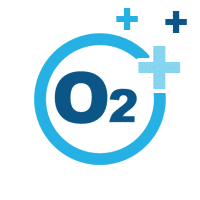Brain Damage
Brain damage is an injury that causes the deterioration or destruction of brain cells. Brain damage includes both Traumatic Brain Injury (TBI), caused by an external force, and Acquired Brain Injury (ABI), occurring at the cellular level. The severity of damage can vary based on they type of injury, but can range from headaches, confusion, and memory problems, to more severe cognitive, behavioral, and physical disabilities.
Benefits of Hyperbaric Oxygen Therapy for Brain Damage:

Increases Amount of Oxygen in the Blood
Stimulates development of new blood vessels from pre-existing vessels as well as the natural development of new blood vessels.

Reduces Inflammation & Swelling
Suppresses the cellular activity of the immune system which triggers swelling when an injury or damage to the body occurs. While this reaction is meant to start healing and protect from injury it can result in secondary injury, pain, and prolonged recovery time.

Preserves, Repairs, & Enhances Cellular Functions
Boosts cellular metabolism, promotes rapid cell reproduction, and enhances collagen synthesis. Collagen is a protein in connective tissues like skin.
Key Research on Hyperbaric Oxygen Therapy for Brain Damage
Recent News on Hyperbaric Oxygen Therapy for Brain Damage
North Carolina launches plan to use new “lifesaving” oxygen therapy to treat veterans for PTSD
By Keenan Willard, WRAL eastern North Carolina reporter North Carolina is one of the first states in the country to start using a new oxygen treatment to help veterans overcome Post Traumatic Stress Disorder. Hyperbaric oxygen therapy is being called a "lifesaver"...
Dr. Maroon’s Personal Experience with Hyperbaric Oxygen Therapy
My Personal Journey to Florida’s Aviv Hyperbaric Clinic – By Joseph C. Maroon, MD, FACS* In 1513, Spanish explorer Juan Ponce de León, traveled to Florida seeking the Fountain of Youth. Legend has it that magical waters, from a special spring, could reverse the aging...
The VA Should Consider Hyperbaric Oxygen as a Worthwhile Treatment
From Military Times Commentary by Tommy Tuberville Army Capt. Kyle Salik is the first patient to receive oxygen therapy at the new Undersea & Hyperbaric Medicine Clinic at Brooke Army Medical Center June 20, 2017. (Robert Shields/Army) The COVID-19 pandemic...
Related Indications
Schedule a Consultation
Additional Research
Executive summary: The Brain Injury and Mechanism of Action of Hyperbaric Oxygen for Persistent Post-Concussive Symptoms after Mild Traumatic Brain Injury (mTBI) (BIMA) Study.
The Brain Injury and Mechanism of Action of Hyperbaric Oxygen for Persistent Post-Concussive Symptoms after Mild Traumatic Brain Injury (mTBI) (BIMA) study, sponsored by the Department of Defense and held under an investigational new drug application by the Office of the Army Surgeon General, is one of the largest and most complex clinical trials of hyperbaric oxygen (HBO₂) for post-concussive symptoms (PCS) in U.S. military service members.
Hyperbaric oxygen for mild traumatic brain injury: Design and baseline summary.
The Brain Injury and Mechanisms of Action of Hyperbaric Oxygen for Persistent Post-Concussive Symptoms after Mild Traumatic Brain Injury (mTBI) (BIMA) study, sponsored by the Department of Defense, is a randomized double-blind, sham-controlled clinical trial that has a longer duration of follow-up and more comprehensive assessment battery compared to recent HBO₂ studies. BIMA randomized 71 participants from September 2012 to May 2014. Primary results are expected in 2017. Randomized military personnel received hyperbaric oxygen (HBO₂) at 1.5 atmospheres absolute (ATA) or sham chamber sessions at 1.2 ATA, air, for 60 minutes daily for 40 sessions. Outcomes include neuropsychological, neuroimaging, neurological, vestibular, autonomic function, electroencephalography, and visual systems evaluated at baseline, immediately following intervention at 13 weeks and six months with self-report symptom and quality of life questionnaires at 12 months, 24 months and 36 months. Characteristics include: median age 33 years (range 21-53); 99% male; 82% Caucasian; 49% diagnosed post-traumatic stress disorder; 28% with most recent injury three months to one year prior to enrollment; 32% blast injuries; and 73% multiple injuries. This manuscript describes the study design, outcome assessment battery, and baseline characteristics. Independent of a therapeutic role of HBO₂, results of BIMA will aid understanding of mTBI.
Neuropsychological assessments in a hyperbaric trial of post-concussive symptoms.
Results of studies addressing the effect of mild traumatic brain injury (mTBI) and post-traumatic stress disorder (PTSD) on symptoms and neuropsychological assessments are mixed regarding cognitive deficits in these populations. Neuropsychological assessments were compared between U.S. military service members with mTBI only (n=36) vs. those with mTBI÷ PTSD (n=35) from a randomized interventional study of mTBI participants with persistent post-concussive symptoms (PCS). The mTBI group endorsed worse symptoms than published norms on PCS, PTSD and pain scales (⟩50% abnormal on Neurobehavioral Symptom Inventory (NSI), PTSD Checklist-Civilian, McGill Pain Questionnaire-Short Form) and some quality of life domains. Worse symptom reporting was found in the mTBI÷ PTSD group compared to mTBI (e.g., mean NSI total score in mTBI 27.5 (SD=12.7), mTBI÷ PTSD 39.9 (SD=13.6), p⟨0.001). The mTBI÷PTSD group performed worse than mTBI on the Weschler Adult Intelligence Scale digit span (mean difference -1.5, 95% CI[-2.9,-0.1], p=0.04) and symbol search (mean difference -1.5, 95% CI[-2.7,-0.2], p=0.03) and Grooved Pegboard (dominant hand mean difference -7.0, 95% CI[-11.5,-2.4], p=0.003; non-dominant mean difference -9.8, 95% CI[-14.9,-4.7], p⟨0.001). Differences were detected in ANAM simple reaction time (p=0.04) and mathematical processing (p=0.03) but not verbal fluency or visuospatial memory assessments. Results indicate increased symptom severity and some cognitive deficits in mTBI÷ PTSD compared to mTBI alone.
